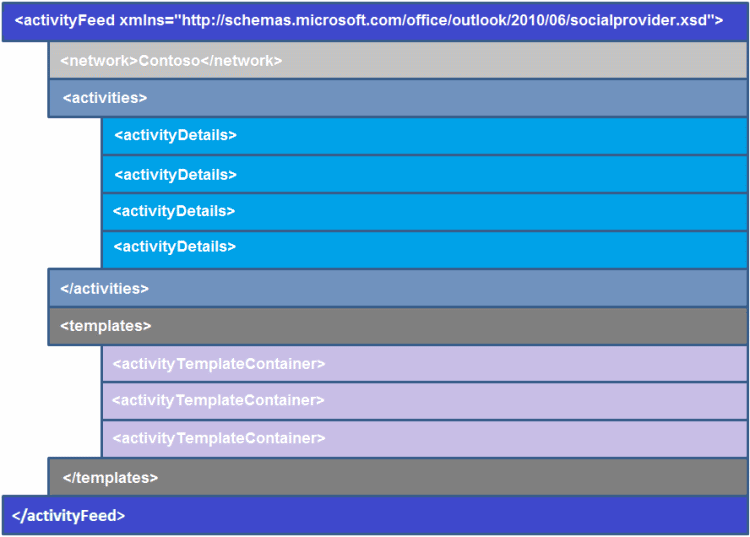Overview of XML for an activity feed item
An activity feed consists of one or more activities occurring on a social network. Each activity feed is represented by an activityFeed element, and is characterized by these three pieces of information:
network—Name of the social network from which the activities originated.
activities—Container for activities happening on the logged on user's account on that social network.
templates—Container for templates that are used to display the corresponding activity item in activities.
To create an activity feed item, you must conform to the Outlook Social Connector (OSC) provider extensibility XML schema. Figure 1 shows the activity feed XML structure.
Figure 1. Activity feed XML structure

For each activity feed item, the two most important parts of this schema are the activityDetails and activityTemplateContainer elements:
The activityDetails element stores specific information for each activity feed item, such as the activity owner's name or the URL for the pictures uploaded.
The activityTemplateContainer element stores the format or layout for each activity feed item. It consists of templates, represented by individual activityTemplate elements, that can be reused for multiple feed items.
For an individual activity feed item, the activityTemplate element specifies the following four pieces of information:
icon—Specifies the URL for the icon to display the activity feed item.
title—Describes the activity feed item.
type—Specifies the type of activity, such as a status, photo, or document update.
data—Specifies any extra information displayed with activity feed item.
Tip
The icon displayed in the activity feed is always the same as the provider icon returned by the ISocialProvider::SocialNetworkIcon property.
See the following topics for more information about the activityDetails element, the activityTemplateContainer element, template tokens, and template variables:
For an example of activity feed XML, see Activity Feed XML Example.